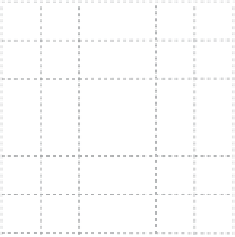Graphics Reference
In-Depth Information
i
(-1
+
2
i
)
(2
+
i
)
r
(-2
-
i
)
(1
-
2
i
)
Figure 7.5.
7.3.6 Unifying
e
,
i
,
sin
, and
cos
e
x
sinxcos x can be defined as the infinite series
x
2
2
x
3
3
x
1
e
x
=
1
+
!
+
!
+
!
+···
x
3
3
x
5
5
x
7
7
sinx
=
x
−
!
+
!
−
!
···
x
2
2
x
4
4
x
6
6
cos x
=
1
−
!
+
!
−
!
···
But what happens if we make x a complex number in e
x
?
x
i
1
x
2
i
2
2
x
3
i
3
3
e
x
i
=
1
+
!
+
+
+···
!
!
x
i
1
x
2
2
x
3
i
3
x
4
4
x
5
i
5
e
x
i
=
1
+
!
−
!
−
!
+
!
+
!
···
Collecting real and imaginary terms gives us
x
i
x
2
2
x
4
4
x
6
6
x
3
3
x
5
5
x
7
7
e
x
i
=
1
−
!
+
!
−
!
···+
−
!
+
!
−
!
···
which we recognise as the sin and cos functions. Therefore,
e
x
i
=
cos x
+
sinx
i
(7.7)
=
When x
, we obtain
e
i
=
cos
+
sin
i
e
i
=−
1
(7.8)
which is the beautiful relationship discovered by Euler.









